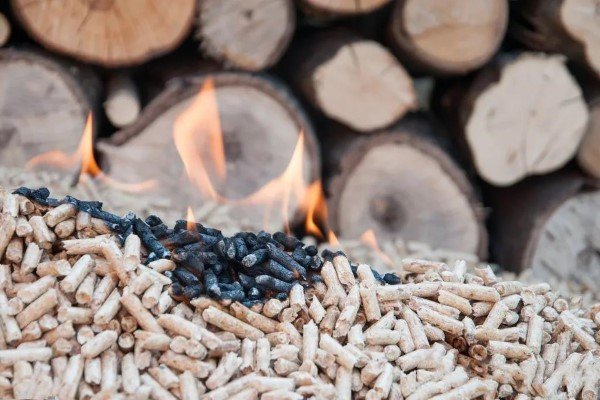Here we compared the calorific values and costs of biomass fuels and others. They are Natural Gas (CNG), Semi-coke, Biomass Granule, Biomass Pellet and Wood Chips.
| Fuel Type | Coal | CNG | Semi-coke | Biomass Granule | Biomass Pellets | Wood Chips |
| Calorific Value (Kcal.) | 5500 | 8000 | 6000 | 4000 | 3800 | 3500 |
| Thermal Efficiency | 75% | 90% | 75% | 85% | 85% | 85% |
| Fuel Price | ¥700/Mt | ¥3.2/CBM | ¥950/Mt | ¥900/Mt | ¥650/Mt | ¥350/Mt |
| Consumption Amount | 150KG | 86 CBM | 138KG | 182KG | 190KG | 200KG |
| Steam Amount | ¥105/Mt | ¥270/Mt | ¥130/Mt | ¥164/Mt | ¥125/Mt | ¥173/Mt |
| Environmental Policy | Against | Welcome | Welcome | Welcome | Welcome | Welcome |
Features of Biomass Fuels
- High efficiency and energy saving. 2.5~3 kg of wood pellet fuel is equivalent to 1 kg of diesel, but the cost is less than half of diesel. Moreover, its burnout rate can reach more than 98%.
- Wide application and strong applicability. Pelleted fuel can be widely used in industrial and agricultural production, power generation, industrial heating or home cooking.
- Green and clean: burns without smoke or pungent smells, its emissions of sulfur, ash, nitrogen, much lower than coal, oil.
- Low cost and high added value. Its cost is much lower than petroleum, and it is a clean energy advocated by the governments. It has a broad market potential.
- Convenient storage and transportation. The pelleted fuel has a small volume, a large ratio and a large density, which is convenient for processing, conversion, storage, transportation and continuous use

